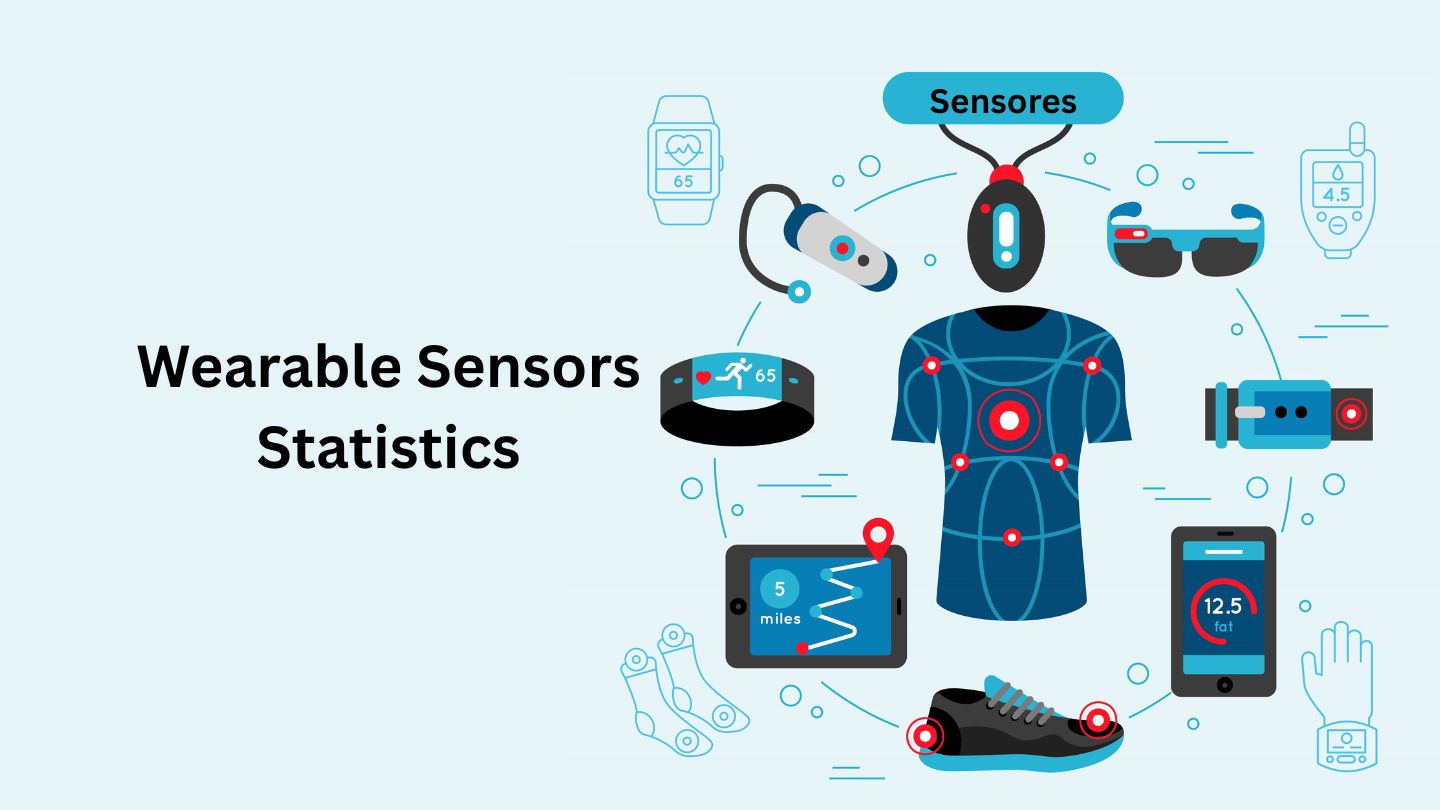Digital Signage Statistics And Fact (2025)

Updated · Feb 28, 2025


TABLE OF CONTENTS
- Introduction
- Editor’s Choice
- What is Digital Signage?
- Roles and Function of Digital Signage
- Digital Signage Market Size By Market.us
- General Digital Signage Statistics
- Adoption of Digital Signage Statistics
- Retail Digital Signage Statistics
- Corporate and Employee Communication Statistics
- Digital Signage in Banking and Finance Statistics
- Digital Signage in Healthcare Statistics
- DOOH And Digital Signage Statistics
- Hospitality And Digital Signage Statistics
- Conclusion
Introduction
Digital Signage Statistics: Digital signage uses electronic screens like LCD or LED displays to show multimedia content, replacing old-fashioned static signs. Over time, it has improved and is now found in many public places. Digital signage includes things like screens, media players, content management systems, and the network needed to connect everything. The content can be text, images, videos, or animations, all managed with special software.
This technology is used in many fields, including retail, hospitality, transportation, healthcare, and business. It helps improve customer engagement, creates better experiences, and can save money. However, there are technical issues, complex content management, and security risks. We will shed more light on Digital Signage Statistics through this article.
Editor’s Choice
- The Business Research Company reported that the digital signage market will reach $21.59 billion by 2025, growing by 10.6% from $19.52 billion in 2022.
- Digital Signage Statistics stated that using digital signage can increase profits by 124% and boost sales by 7%.
- In 2018, the digital signage industry was valued at $19.78 billion, and it’s expected to grow to $35.94 billion by 2026.
- The global digital screen market is projected to reach $32.12 billion by 2026, growing at a rate of 7.7% each year from 2021 to 2026.
- This market is expected to keep growing steadily, reaching an estimated $45.33 billion by 2030.
What is Digital Signage?
Digital signage is a type of electronic display. It uses technologies like LCD, LED, OLED, projection, and e-paper to show digital images, videos, web pages, weather updates, restaurant menus, or text. These displays are found in places like public areas, transportation systems, museums, sports stadiums, stores, hotels, restaurants, and office buildings. They are used for wayfinding, exhibits, advertising, and marketing.
These displays are part of a network that can be controlled from one central system, allowing them to show text, animations, or videos for advertising, sharing information, providing entertainment, and promoting products to specific groups of people.
Roles and Function of Digital Signage
Digital signage has many different uses that help businesses reach their goals. Some of the most common ways it’s used include:
- Public Information: Showing news, weather, traffic updates, and location-specific details like building maps, fire exits, and travel info.
- Internal Information: Displaying company messages, health & safety tips, and news for employees.
- Product Information: Showing prices, product photos, ingredients, and usage ideas. This is especially useful in food marketing, where signs might include nutritional info or recipe suggestions.
- Improving Customer Service: Providing helpful signs in places like museums, galleries, zoos, parks, and tourist attractions to guide visitors and make their experience better.
- Advertising and Promotion: Promoting products or services, often based on the location of the sign or its audience.
- Brand Building: Using in-store digital signs to promote the brand and build its identity.
- Influencing Customer Behaviour: Helping direct customers to different areas, encouraging them to stay longer in the store, and influencing their choices in other ways.
- Helping with Product or Brand Decisions: Signs at the point of sale can help customers make choices, like guiding shoppers to select clothes in a store or using smart shopping trolleys that show product information and prices.
- Improving Customer Experience: Reducing the feeling of waiting in places like restaurants, banks, or retail stores and offering demonstrations, like recipe ideas in food stores.
- Navigation: Interactive screens or wayfinding systems help people navigate through places like museums or tourist spots.
- Reservations: Small interactive screens let employees reserve spaces for a limited time and connect to scheduling systems.
Digital Signage Market Size By Market.us
- The global digital signage market was valued at USD 27.1 billion in 2023 and is projected to reach USD 52.7 billion by 2032, with a compound annual growth rate (CAGR) of 7.7%.
- However, the market faces challenges due to increased spending on online advertisements by retail customers and the lingering effects of the COVID-19 pandemic, which led to a decline in demand for digital signage products.
- In 2022, the video screen segment accounted for approximately 21% of the market share, making it the dominant segment in the industry. Screens and video walls are widely used in shopping malls and public spaces.
- The hardware components segment represented over 57% of the market’s revenue in 2022, establishing it as the most significant contributor to the market.
- The retail sector contributed over 20% of the global revenue in 2022, making it the largest application segment within the market.
- Currently, North America leads the global market, while the Asia Pacific region is expected to experience significant growth due to the increasing adoption of digital signage solutions in developing countries like India and China. North America dominated the regional market with a valuation of USD 8.5 billion in 2022.
- Key players in the industry include Samsung Electronics, LG Electronics, Sony Corporation, NEC Corporation, and Panasonic Corporation, all of which primarily focus on digital signage hardware.
General Digital Signage Statistics
- Digital Signage Statistics stated that around 135 million people watch customer displays each week.
- North America has the largest digital signage market, with an expected growth rate of 42%, followed by 17% in Asia.
- A study by Lavi Industries found that using digital signage in banks can reduce the feeling of waiting by up to 35%.
- Digital signage ads in public spaces reach 10% of Americans aged 12 and older, compared to 41% on Facebook and 43% online.
- Hotels using digital menus have seen a 5-8% increase in revenue.
- Digital signage can lower the perception of wait times by more than 35% and improve queue management.
- Digital Signage Statistics stated that almost 53% of digital signage users are hopeful about the future and plan to spend more on it in the next two years.
- 65% of users plan to allocate more of their digital signage budget to buying new displays.
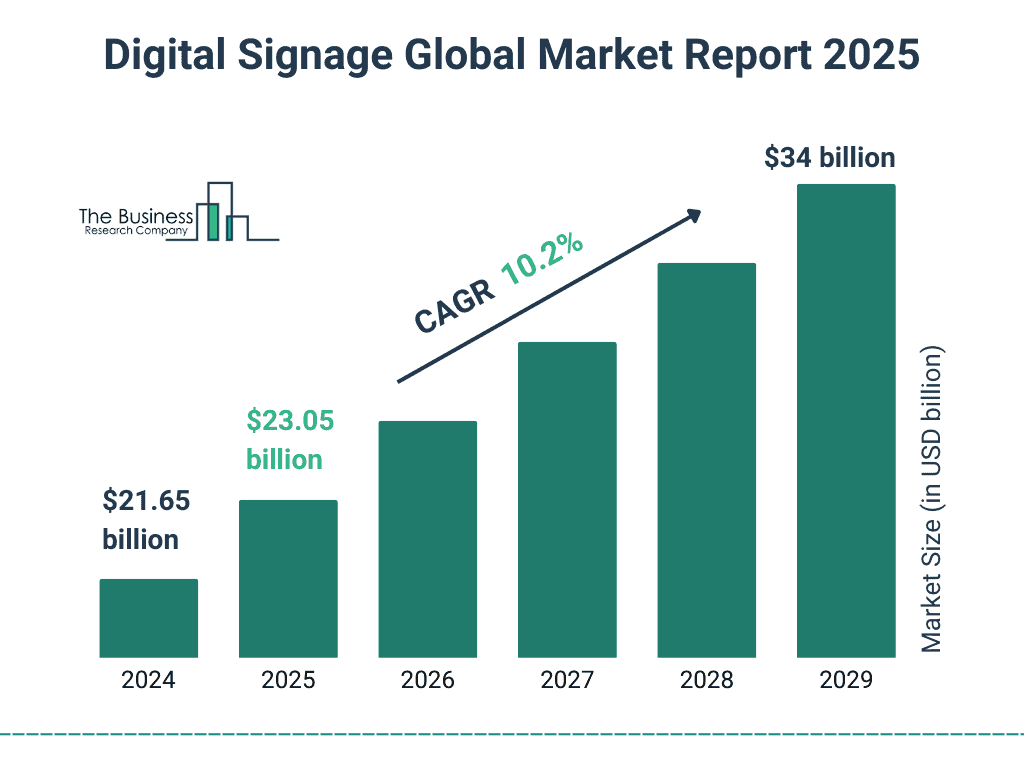
(Source: thebusinessresearchcompany.com)
- 51% of users position their screens to face customers, while only 9% place them to face employees.
- As technology advances, the cost of setting up digital signage has been decreasing.
- A survey found that 95% of museum visitors felt that digital technology improved their experience.
- The digital signage market is expected to reach $38.23 billion by 2027, largely driven by video display walls.
- The typical attention span for digital signage content is between 2.8 and 8 seconds.
- Around 90% of the information the brain processes comes from visual sources.
- The human brain can recognise images shown for as little as 13 milliseconds.
- People are 94% more likely to pay attention to visual content than to text.
- Viewers remember 65% of visual information even after three days.
- Digital signage ads have an 83% recall rate, almost twice as high as traditional ads.
- Digital signage is effective in raising brand awareness, with an effectiveness rate of 47.7%.
- Digital signs attract 400% more attention than static digital displays.
- Digital Signage Statistics stated that almost 75% of travellers remember seeing digital billboards within the past month.
- Digital signage can increase purchases by 29.5%.
Adoption of Digital Signage Statistics
- Over 25% of businesses see ‘multichannel campaign management’ as a top priority
- Digital Signage Statistics stated that nearly 63% of people say digital signage grabs their attention
- 84% of UK retailers believe digital signage increases brand awareness
- Digital signage helps stores make their brand more noticeable. It gives customers a better idea of the brand and creates an engaging experience. That’s why retailers use it to improve communication with shoppers.
- Digital signage provides engaging content and a wide reach, making it better than other channels like Facebook and online video platforms, which reach only about 45%.
- Retailers use video displays to show their marketing messages to a larger audience.
- Digital Signage Statistics stated that almost 42% of people who watch retail videos would prefer shopping at stores with video displays.
- With 4K and 8K displays, the visuals on video walls are much better, and retailers are using them to both entertain and inform customers.
- Video walls engage shoppers, distracting them while they wait. Plus, 73% of people say they prefer watching short videos to learn about products or services.
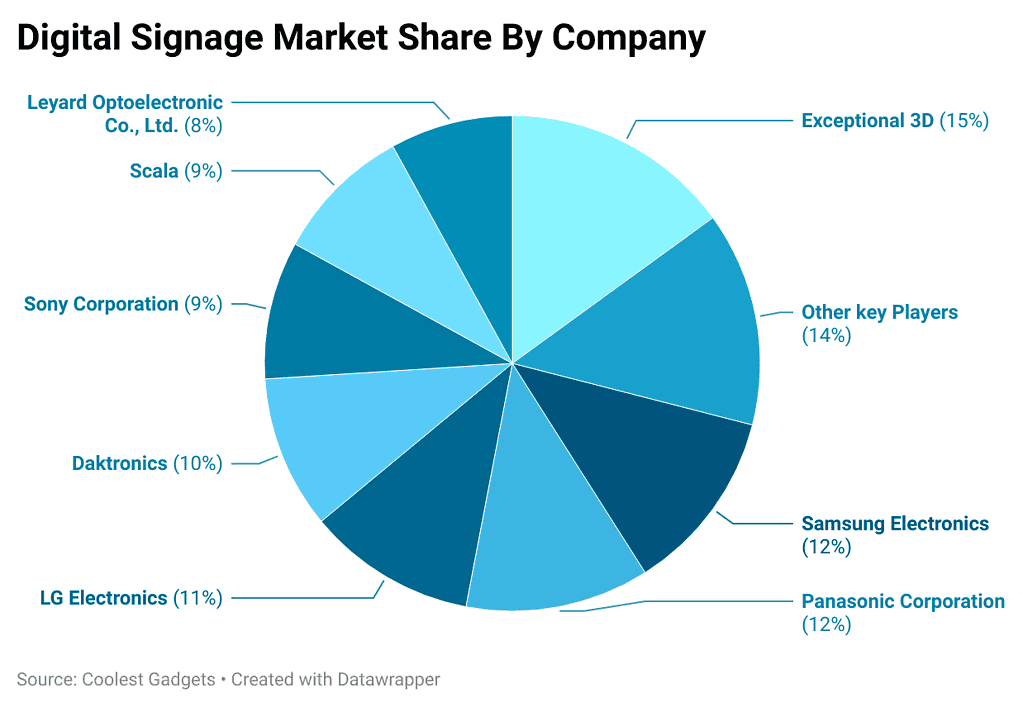
(Reference: scoop.market.us)
- Digital signage can make long waits seem shorter. Connecting to queue management systems improves the customer experience and makes waiting feel less time-consuming.
- 5% of customers say digital menus affect their purchase choices
- Bright, eye-catching digital menus have replaced traditional static boards in places like fast-food restaurants. These menus can show the right deals and prices at the right moment, which encourages customers to buy more.
- People aged 14 to 24 love shopping in stores, often for mental health reasons. They like discovering new products in person.
- To attract these digital-native shoppers, stores can use apps that work with the in-store digital signage, offering a more personalised experience and pushing promotions directly to the customer’s phone.
- Long lines, difficulty finding products, or not knowing prices can make customers leave without buying.
- Digital signage makes the shopping experience better by showing content that encourages customers to make more purchases through impulse buys, cross-sells, and upsells.
- Digital Signage Statistics state that over 60% of purchasing decisions are made at the point of sale.
Retail Digital Signage Statistics
Retail digital signage makes shopping easier for customers, allowing them to shop on their terms. By using technology in the shopping experience, retailers can benefit in many ways that help increase profits.
- The best places to use digital signage are grocery stores (28% of U.S. residents), shopping malls (27%), medical offices (20%), and large retail stores (20%).
- 80% of customers are more likely to enter a store after seeing digital signage.
- 64% of digital signage users say it increases customer engagement.
- 57% say it has improved their customer service.
- Digital Signage Statistics stated that almost 43% of retailers use digital signage for staff training, with 22% calling it essential.
- 84% of retailers believe digital signage helps boost brand awareness compared to traditional advertising.
- Digital signage increases customer satisfaction by 46%.
- It also raises the average amount spent by customers by 29.5%.
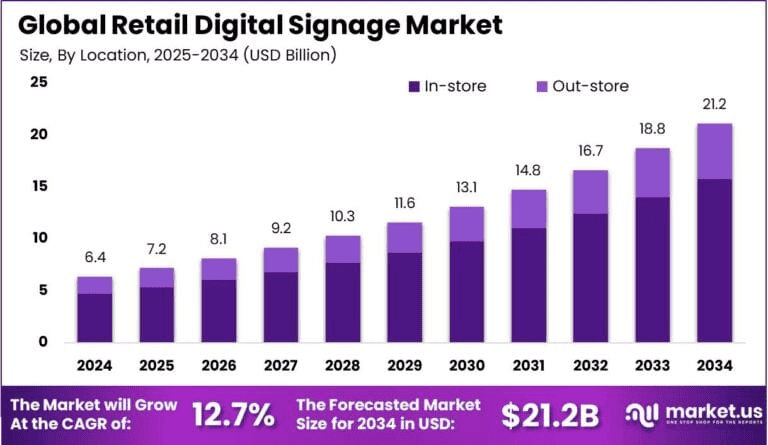
(Source: market.us)
- It leads to a 32.8% increase in repeat customers.
- Digital displays can raise overall sales by 31.8%.
- 75% of people agree that content focused on sales, like promotions, ads, personalised messages, and extra value, is likely to succeed.
- Digital signage makes a big impact. 59% of people who see it want to learn more about the product or topic.
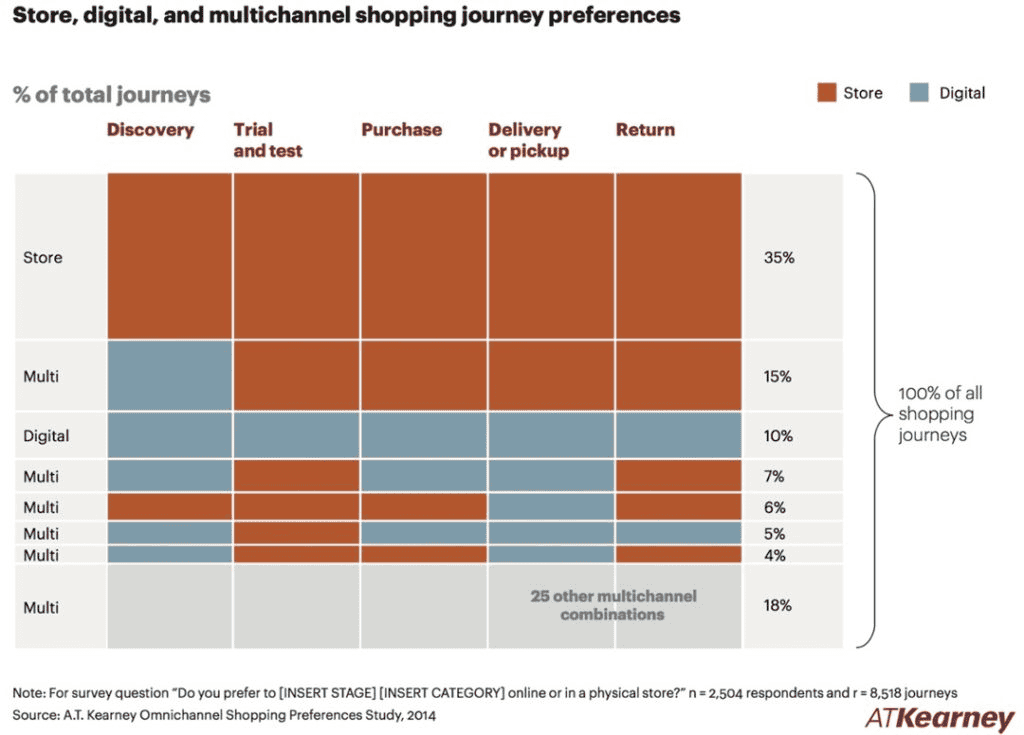
(Source: diviewdisplay.com)
- 70% of Americans have seen a digital billboard or digital sign in the past month.
- Of those, 47% can remember a specific message they saw.
- Digital Signage Statistics stated that almost 71% of consumers feel that ads on digital signs stand out more than online ads.
- 46% believe digital signage ads are more noticeable than TV commercials.
- Nearly 87% of millennials like seeing products placed in videos.
- Digital signage helps raise brand awareness and supports marketing efforts. More than 40% of shoppers say it affects their buying choices.
- 76% of U.S. shoppers have entered stores they’ve never been to just because of the signage.
- Digital Signage Statistics stated that almost 68% of Americans have bought something after being attracted by signage.
- Adding digital signage can increase store traffic by up to 24%.
Corporate and Employee Communication Statistics
Modern companies know that good communication is essential and value digital signage for improving workplace interaction. Effective communication leads to better employee engagement, which boosts productivity and helps the company’s profits.
- Digital Signage Statistics stated that almost 56% of communication teams are planning to use more digital signage in their organisations.
- 50% of communication professionals already use digital signage.
- Digital signage is great for employee recognition. Workers who feel appreciated are 60% more likely to work harder.
- For example, digital signage improves internal communication, which leads to a 25% increase in employee productivity.
- Companies that communicate well are 4 times more likely to report higher employee engagement.
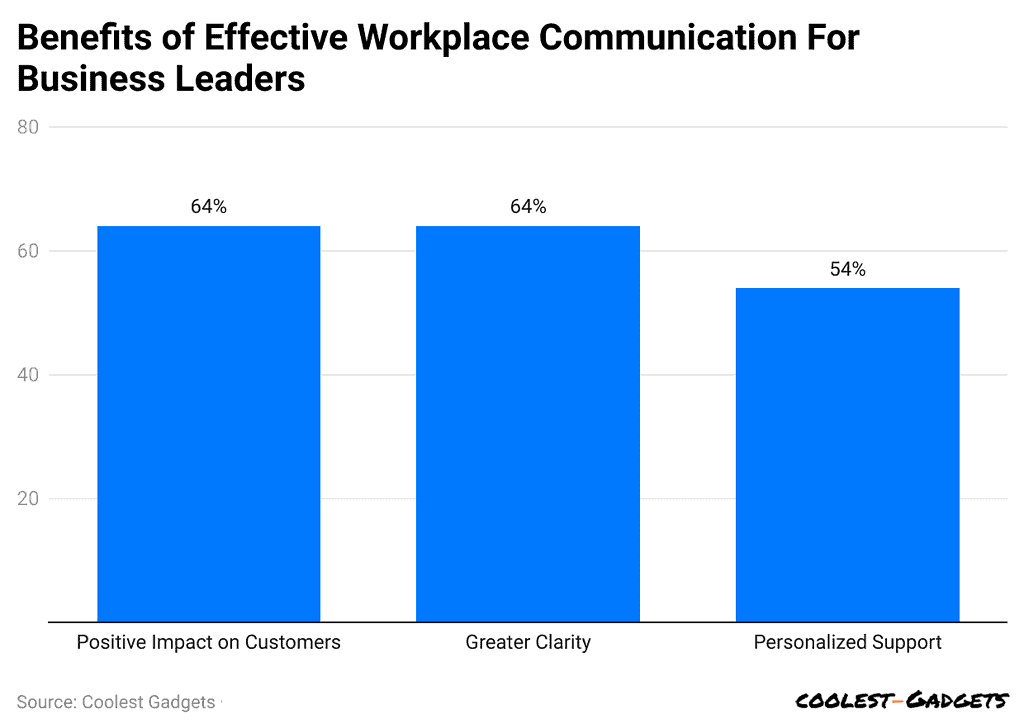
(Reference: notta.ai)
- Digital Signage Statistics stated that almost 93% of effective communication is nonverbal, while only 7% comes from spoken words.
- Employees who feel disengaged are 12 times more likely to leave their jobs in the next year.
- Presentations with visual aids are 43% more convincing than those without.
- 68% of customers say that the signage in a business reflects the quality of the company and its products.
- Over 25% of U.S. companies make “multichannel campaign management” a top priority, which includes using digital signage.
- 47% of employees don’t know their company’s core values, so digital signage can be a great way to share this information with everyone.
- Companies that use digital tools for remote workers see a 67% increase in productivity.
Digital Signage in Banking and Finance Statistics
- Digital Signage Statistics stated that having digital signage in bank branches makes customers feel more trusting of the bank, with 87% of people agreeing with this.
- Surveys also find that 87% of people, especially 97% of millennials, use mobile banking apps regularly.
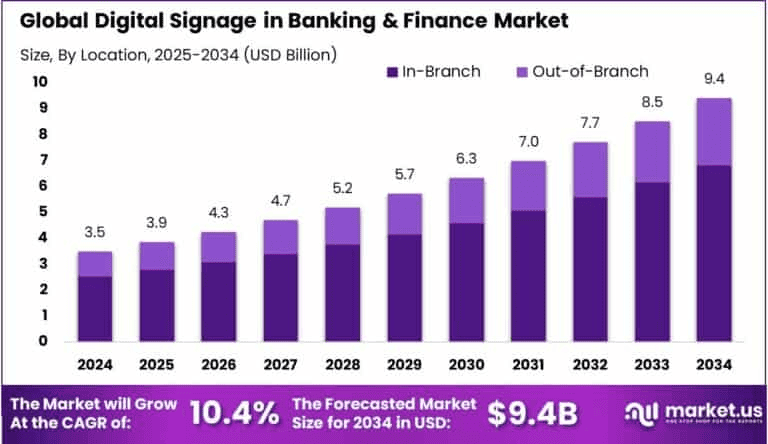
(Source: market.us)
- Therefore, banks should use digital signage to promote their mobile apps and their features. This can encourage customers who haven’t started using mobile banking to give it a try.
- Many customers feel impatient while waiting in line and think they are waiting longer than they are.
- To solve this, 60% of banks have installed digital signage. These screens display updates about the bank (75% of the content) and other news (25%) to keep customers entertained.
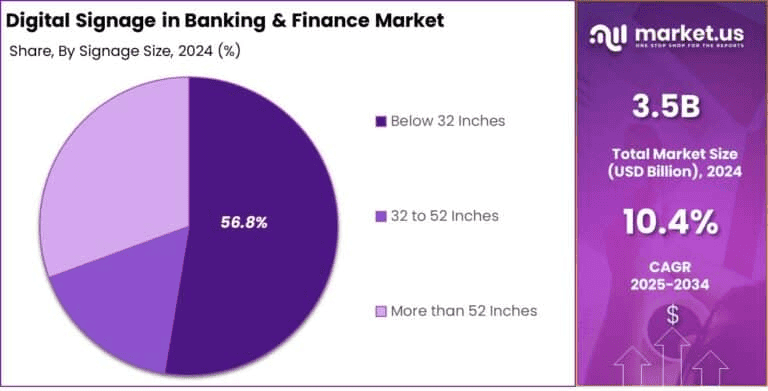
(Source: market.us)
- The global digital payment market is expected to reach $12.55 trillion by 2027, growing at a rate of 9% annually from 2021 to 2027.
- Additionally, 9 out of 10 banks agree that digital signage is an important part of their marketing strategy in the branch.
Digital Signage in Healthcare Statistics
- Digital Signage Statistics stated that around 64% of doctors believe that the Internet of Things (IoT) can help reduce the workload of nurses and doctors.
- About 52% of patients get health information through digital signage. This shows that over half of the patients rely on digital displays as a trusted source for health advice, proving their effectiveness in sharing important health information in medical environments.
- 83% of patients interact actively with digital content provided by hospitals. This high level of engagement shows how important digital health tools are in keeping patients involved and informed during their visits to the hospital.
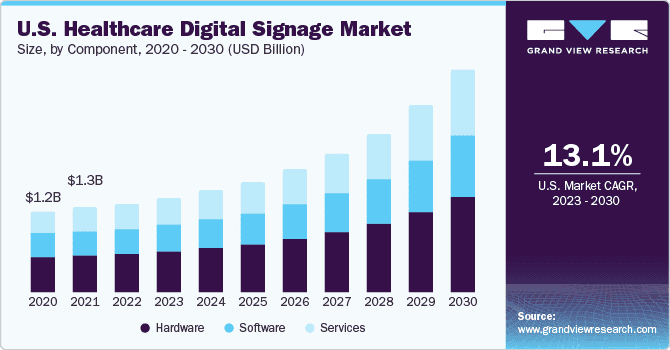
(Source: grandviewresearch.com)
- 75% of both patients and healthcare workers feel that the content on digital signs improves their hospital experience. This strong agreement shows that both patients and staff see the value in digital signage, as it helps deliver useful and relevant health information efficiently.
- Nearly 40% of patients say that digital communication affects their choices and experiences in healthcare settings. This shows that a significant number of patients are influenced by digital displays when making decisions, highlighting how digital signage can engage and support patients in their decision-making process.
- 92% of healthcare organisations that have adopted digital health solutions have seen an improvement in their performance. This impressive figure shows that most healthcare institutions benefit from digital signage, which plays a key role in improving their operations and the quality of care they provide to patients.
DOOH And Digital Signage Statistics
- By 2026, the Digital Out-Of-Home (DOOH) market is expected to grow by 10.35%, reaching $33.372 billion.
- 62% of people are likely to take action on their phones after seeing a digital ad on a billboard.
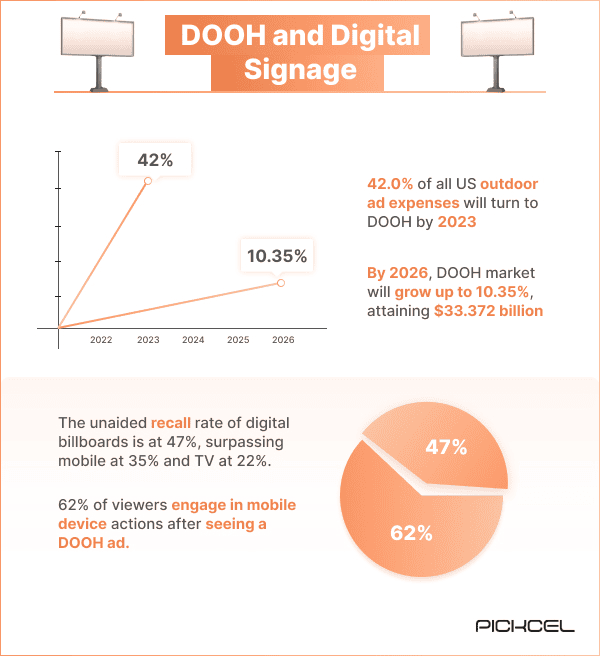
(Source: pickcel.com)
- This could include visiting the advertiser’s website, scanning a QR code, using the SMS link, downloading an app for discounts, or making a purchase.
- By 2023, 42% of all outdoor advertising spending in the U.S. is expected to go toward DOOH.
- Digital billboards are a great tool for sharing ads, with a recall rate of 47%, which is higher than mobile ads at 35% and TV ads at 22%.
Hospitality And Digital Signage Statistics
Restaurants can benefit from digital signage systems because they offer an easy and flexible way to update menus and simplify ordering.
- Digital Signage Statistics stated that almost 74% of restaurant-goers say having an effective digital sign is very important. Digital signage lets restaurants create attractive, easy-to-update designs without the need to print new menus constantly.
- Digital menu boards in fast-food restaurants can increase sales by up to 30%.
- Online menu boards with clear and effective displays have led to an average sales increase of 29.5%.
- Choosing the right outdoor and digital menu boards can increase sales by up to 38%, improve customer experience, and make operations smoother.
- Restaurant technology is becoming more popular with diners, as 73% believe it makes their dining experience better.
- These modern menu boards are expected to grow at a rate of 5.8% every year for the next few years.
- Studies show that about 30% of consumers consider digital signage when making a purchase.
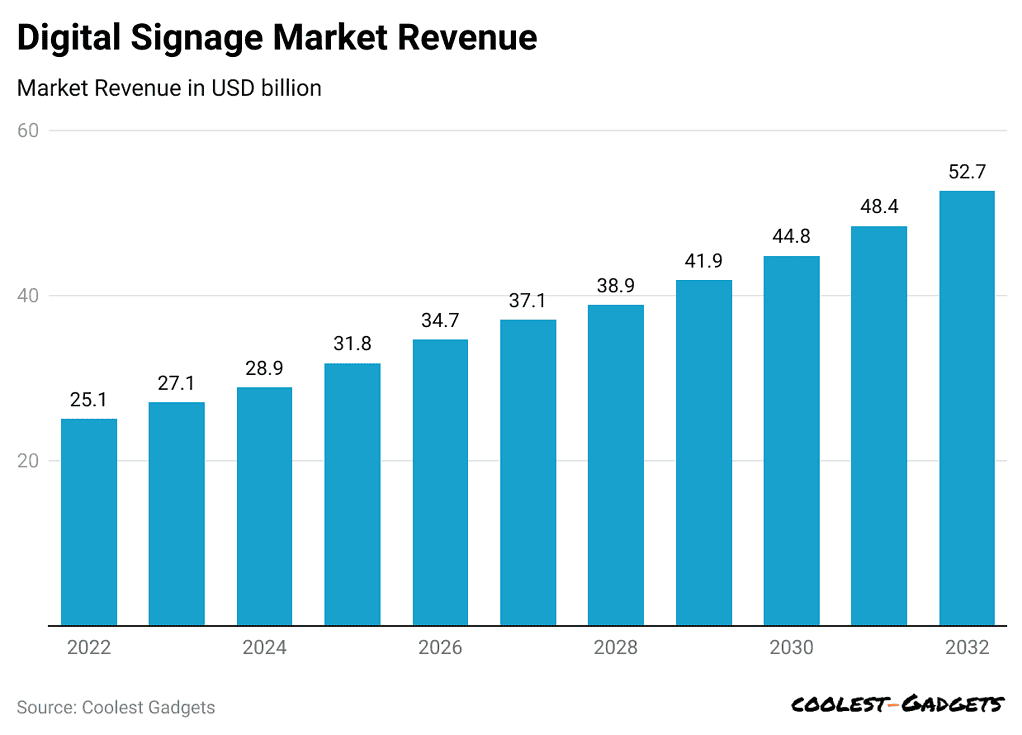
(Reference: scoop.market.us)
- Research shows that digital menus can boost sales by up to 38% and increase customer satisfaction by 20%.
- Digital menu boards are used by 95% of restaurant owners who believe technology makes their business more efficient.
- Spending on digital signage can lead to a 3% increase in profit margins from transactions.
- About 20% of digital signage is used in quick-service restaurants with menu boards.
- Nearly 30% of restaurant customers say digital menus strongly affect their buying decisions.
- Restaurant customers are increasingly influenced by digital menus, with nearly 30% saying they impact their purchases.
- Digital Signage Statistics stated that almost 80% of customers made an impulse purchase after seeing a digitally advertised product or service in a restaurant.
- Many consumers agree that digital menus make ordering easier, with over 70% agreeing.
- Research shows that digital menu boards can raise sales by up to 38% and provide more convenience to customers.
Conclusion
In conclusion, digital signage has become an important tool for businesses in many industries. It helps boost customer engagement, increase satisfaction, and drive sales and brand recognition. Its flexibility and efficiency, especially in retail and restaurants, make it a great way to improve the customer experience.
As more businesses use digital signage, the ability to update content quickly and connect with customers in real time will continue to influence how companies market and communicate. Digital signage isn’t just a passing trend—it’s a major factor in growing businesses and building customer loyalty.
We have shed enough light on Digital Signage Statistics through this article.
Sources
FAQ.
The global digital signage market was valued at $23.6 billion in 2022 and is forecasted to reach $50.6 billion by 2032, growing at a rate of 8% each year from 2023 to 2032.
For simple installations with 1 to 5 screens, you might pay around $500 or more. However, for larger or more complex setups, like outdoor displays or systems that need to connect with other software, the cost could be over $2,000

Saisuman is a talented content writer with a keen interest in mobile tech, new gadgets, law, and science. She writes articles for websites and newsletters, conducting thorough research for medical professionals. Fluent in five languages, her love for reading and languages led her to a writing career. With a Master’s in Business Administration focusing on Human Resources, Saisuman has worked in HR and with a French international company. In her free time, she enjoys traveling and singing classical songs. At Coolest Gadgets, Saisuman reviews gadgets and analyzes their statistics, making complex information easy for readers to understand.







